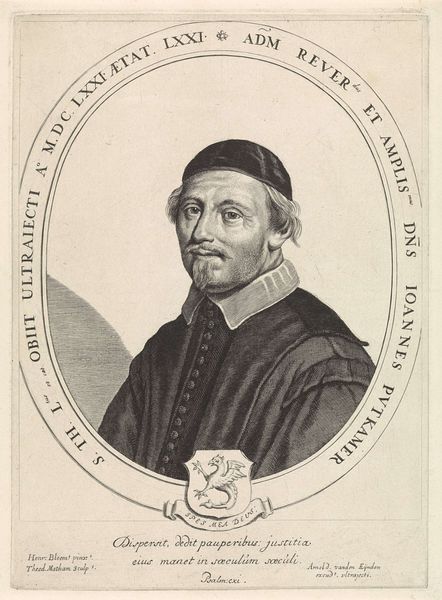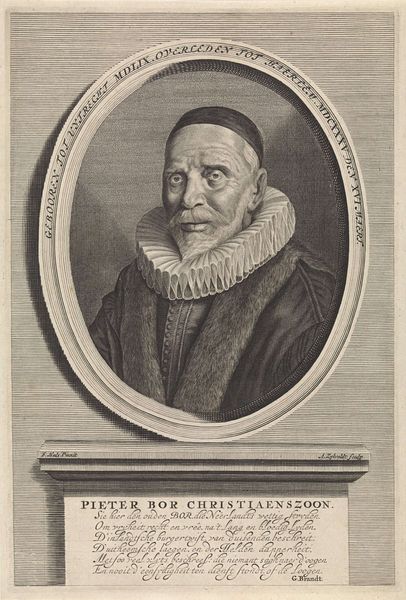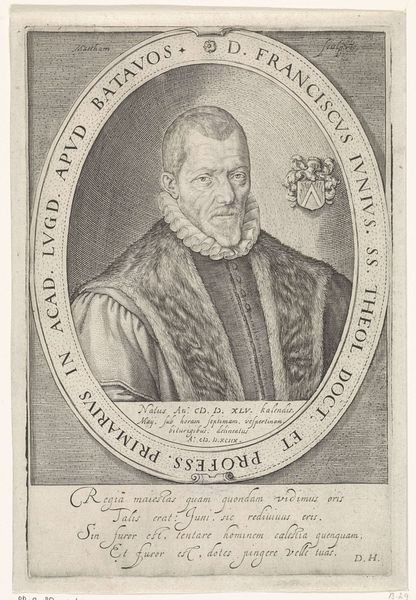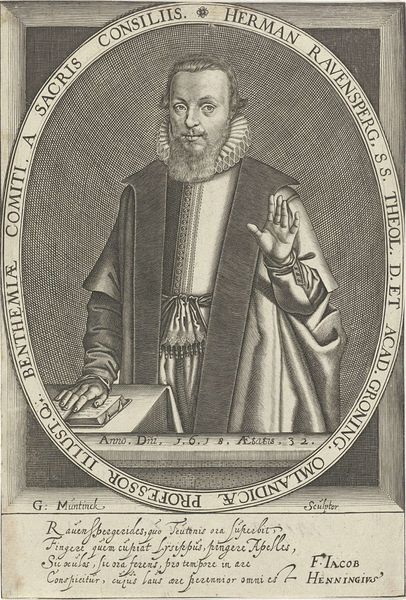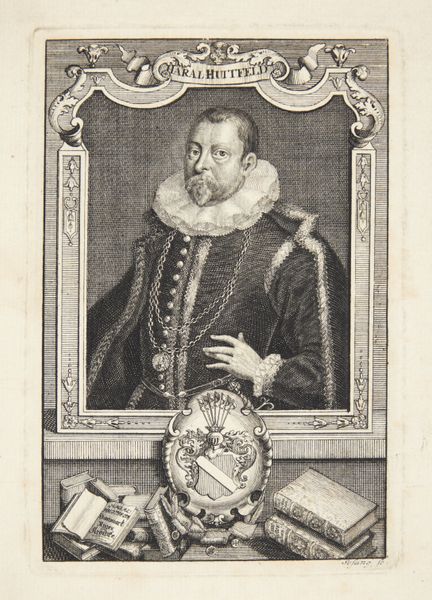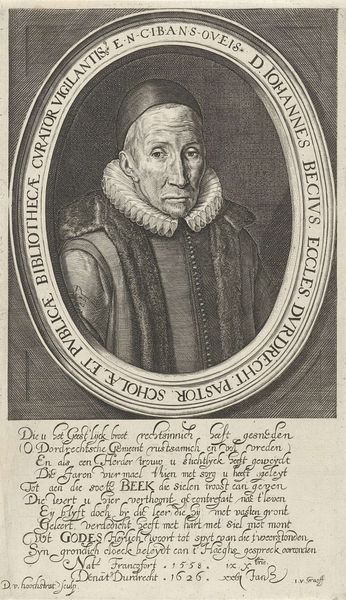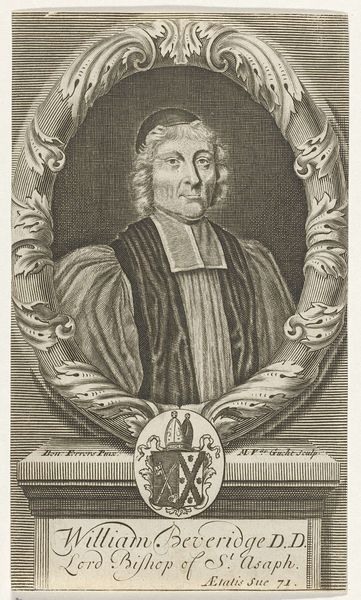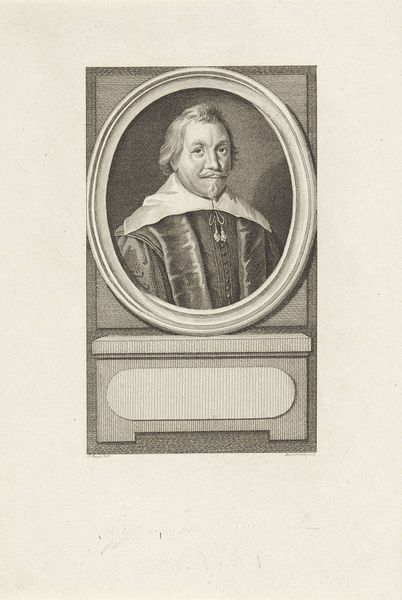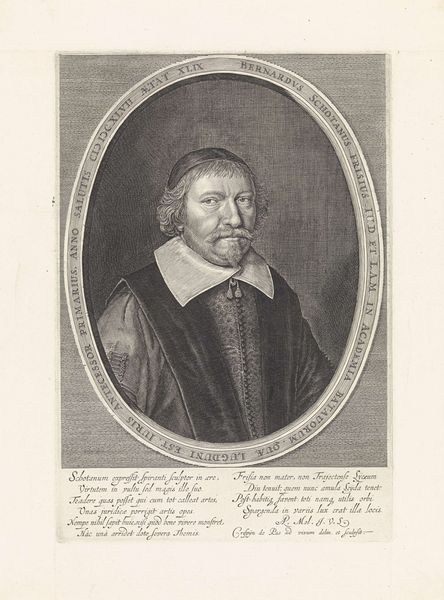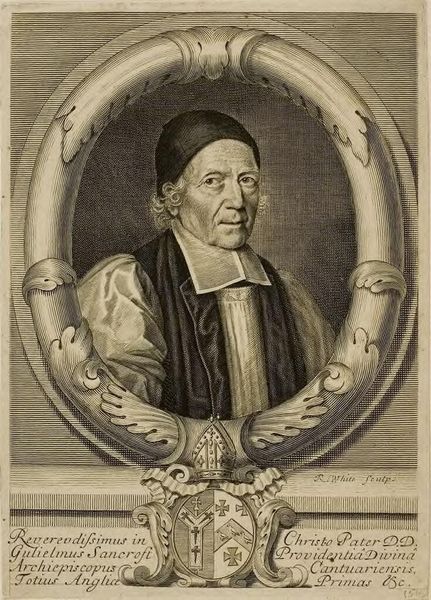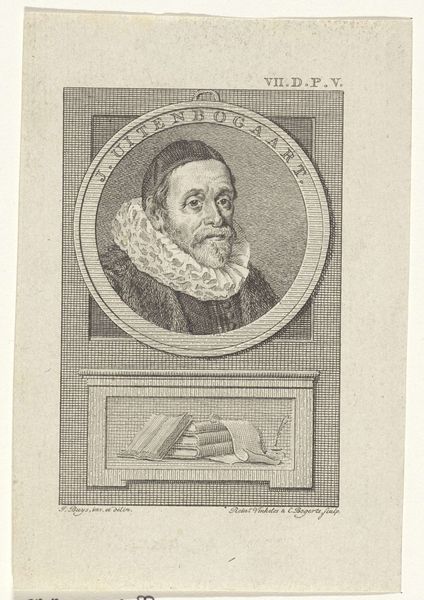
print, engraving
#
baroque
# print
#
old engraving style
#
history-painting
#
engraving
#
calligraphy
Dimensions: height 242 mm, width 151 mm
Copyright: Rijks Museum: Open Domain
Curator: Immediately striking is the intricacy of the lines, so meticulously engraved! Editor: We’re looking at a print, specifically an engraving entitled “Portret van Edward Reynolds.” It was created sometime between 1643 and 1692 by David Loggan. Curator: That detail regarding the artistic print-making technique is key here, influencing our interpretation. Loggan likely would have trained for many years to acquire the craft, becoming specialized in the burin technique and using tools and the media available to him at that time. Editor: Absolutely, and Loggan made this print within a rich context. Think of the period – it's post-English Civil War. The depiction of Edward Reynolds, a prominent clergyman, points towards an evolving religious and political landscape, and a visual need to consolidate public opinion. The print functions as both commemoration and assertion of authority. Curator: This piece prompts contemplation regarding production. What paper was used? How many impressions were made, and how were they distributed? Did the consumers feel the printed edition was a suitable medium to properly disseminate Reynolds' status as an iconic preacher, or would the message benefit from other venues? These are all clues that will explain its enduring public resonance, particularly since many consumers could be expected to possess more than a passing familiarity with printing processes. Editor: Considering Loggan’s attention to minute details, it highlights the cultural value placed on accurate representation. There is both the objective to present him faithfully to disseminate his virtues, while still conveying the nuances and realities of image control during that time. The inscription below Edward’s image, acting almost as a written portrait, tells us volumes about how figures like Reynolds were being consciously presented to the public. Curator: Fascinating. I see that craft, access, production and function were intertwined. This was not an ‘art for art’s sake’ gesture but instead it became enmeshed in the political narrative of the time. Editor: Precisely! Reflecting on this print, it is fascinating to consider how even seemingly simple images play a role in solidifying a leader's influence and legacy.
Comments
No comments
Be the first to comment and join the conversation on the ultimate creative platform.
